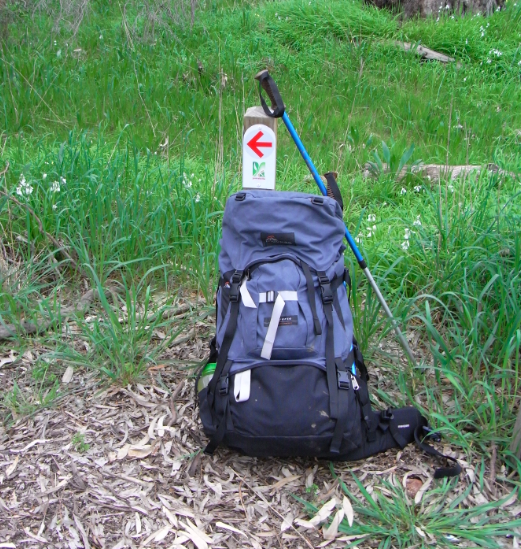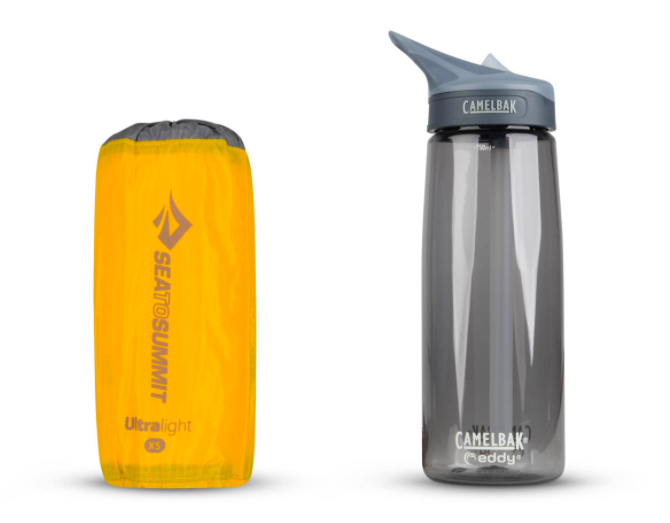We’ve all heard the stories of ultralight hikers cutting the handle of their toothbrush to save weight. Sure, why have the weight of a whole handle in your backpack when it’s unnecessary. However, this really isn’t an effective way to put a big dint in reducing the weight of your pack when there are items that could shave kilograms off your pack weight.
It was Stephanie Hunt who in the group proposed a really solid tactic for reducing pack weight. She wrote from the perspective that hikers will go out and spend money on ultralight weight gear with the view of reducing pack weight. They buy that featherweight titanium spork or pot. Or, they’ll go all in and spend a bunch on a sub-1kg tent. Hunt says, though, that the “quickest way to drop of weight for little sacrifice is to switch out a heavy pack”.
Here is Stephanie Hunt’s top 4 items to consider when it comes to making your backpack more lightweight, in order of bang for your buck:
Contents
Backpack
If you’re hoping to reduce the weight of your hiking gear the first thing you should replace is your backpack. It will deliver the biggest bang for the least financial outlay.
Yes, good packs—lightweight packs—are relatively expensive but the difference in price between a quality heavy pack and a quality lightweight pack is small.
Hunt swapped out her 3kg One Planet for a ZPacks Arc Haul and that saved her 2.8kg. Personally, I went from a Macpac Traverse (the old canvas version) to a lighterweight 48L Macpac and saved a couple of kilograms too.
My old Macpac Traverse. Indestructible but heavy.
What this shift will generally mean though is downgrading capacity. My old Traverse was 70L and I dropped to 48L. But, with good planning and discipline there are few trips you won’t be able to do with a smaller pack compared to that big old thing that held you down. Hunt adds that you may need to swap out some of your other gear to really make hiking with a lighter, smaller pack feasible. But, what it will also force you to do is carry less stuff. “All the things you don’t really need – multiple sets of hiking clothes AND camp clothes AND sleep clothes, five days worth of socks and undies, single use items, luxuries, tonnes of toiletries, an entire cutlery set, cups and bowls and plates, a first aid kit for 10 people (unless you’re a guide)…” she writes.
Good backpacks sit in the $200-$400 category. You can save a lot of weight with that few hundred bucks.
Tent
Hunt recommends looking at your tent next. This is an item you should be able to shave many grams off if you buy well. She writes:
“My bomb proof One Planet Goondie 2 2P all-season tent weighs 2.3kg. My light 2P tent (good in anything except a blizzard or heavy snow dump) weighs 1.4kg. These are both free standing. My ultralight 1P tent that uses my trekking poles weighs 600g. It’s fine in light snow, heavy rain and strong wind if I’m careful about how I set it up. It was $200 to $400 more expensive than the first two if I was to buy them all new now for a 800g to 1.7kg weight saving.”
Some ultralight hikers will opt for tarps rather than tents. This one here us held up using hiking poles to save you having to carry poles. Image credit: Claudine Co
Let’s talk a 2P tent for a moment. A 2P tent like the Black Wolf Grasshopper (in the $200-300 category) weights in at 2.3kg. Compare that to a Big Agnes Copper Spur HV UL2 and you’re only going to have to carry 0.9-1.4kg, depending on whether you go the fast fly config or the full tent. Almost a kilo saved and a $360 cost difference.
Mat
The reason why sleeping mats are third on the list is you won’t save weight to the same magnitude as you would with your pack or tent. We’re talking 400-500 grams if you’re lucky. But, they are relatively cheap to swap out. A Sea to Summit Ultralight Insulated will set you back only $150 and weighs less than half a kilogram. Something like a Black Wolf HexaTherm Hiker Hybrid mat is around half the price (only a $75 odd saving through) but weighs almost double.
Sea to Summit’s Ultralight (the non-insulated version) ranges is weight from 296-495 grams (depending on the length) and will set you back just over $100. The Ultralight Insulated is a bit heavier and dearer but is better suited to cold conditions and is potentially a bit comfier.
Spending relatively a small amount more will save you quite a bit of weight.
Sleeping Bag
I’ll hand over to Hunt completely on this one.
“Lastly, look at your sleeping bag. For a -12C rating (which for me is good to about -5C) my down bag weighs 1.2kg (there are lighter options available now) and my down quilt weighs 620g, both have 900 loft. Many won’t find the two comparable though. I list this last because it’s the most expensive item to swap for at best a 600g gain and for many won’t deliver the warmth and comfort they’re accustomed to in a sleeping bag with hood. Swapping from a heavy old bag to a new lighter bag or quilt though will give you more room in your smaller new lightweight pack. It’s the last thing I’d change if I was transitioning from a heavy set up to a lightweight one.”
The key point here around leaving your sleeping bag as the last thing to address in terms of weight is that for your money you won’t save a lot of weight.
So, there you have it. Four bits of gear to consider swapping out to reduce the weight of your pack. Comment below your weight saving tips.








3 thoughts on “How To Reduce The Weight of Your Backpack”
Thank you both,
So much to choose from and this is good solid knowledge.
Thanks for the article but I have a bit to say about the first item – the pack. I have a One Planet canvas as you say “heavy” pack. However with its harness system the way I describe it is “heavy to pick up but light on the back”. I am a 50something male so weight is more of an issue for me compared to many. The way I described the pack is correct it is “light on the back” – remarkably so!
I think this aspect should be given more credit/airplay compared to just “it is heavy” line which is so common.
Thanks, would appreciate your thoughts.
Eamonn Walsh
Great approach which I too have adopted. Next is to look at minimising clothes (safely) – we often pack for every emergency. You don’t need a soft shell and a raincoat . If the hike is short and the weather outlook good you can the drop down from the heavy Goretex shell to eg an OR Helium II – saves 300-500 gms. To make the smaller pack work also look at nesting of things like pots and bowls and mugs. Then I looked at what was left for lighter alternatives – saving 50 gms on 6 items another 300 – eg Swiss Army knife swapped out for Opinel 7 saving 60g, … And etc It’s a journey